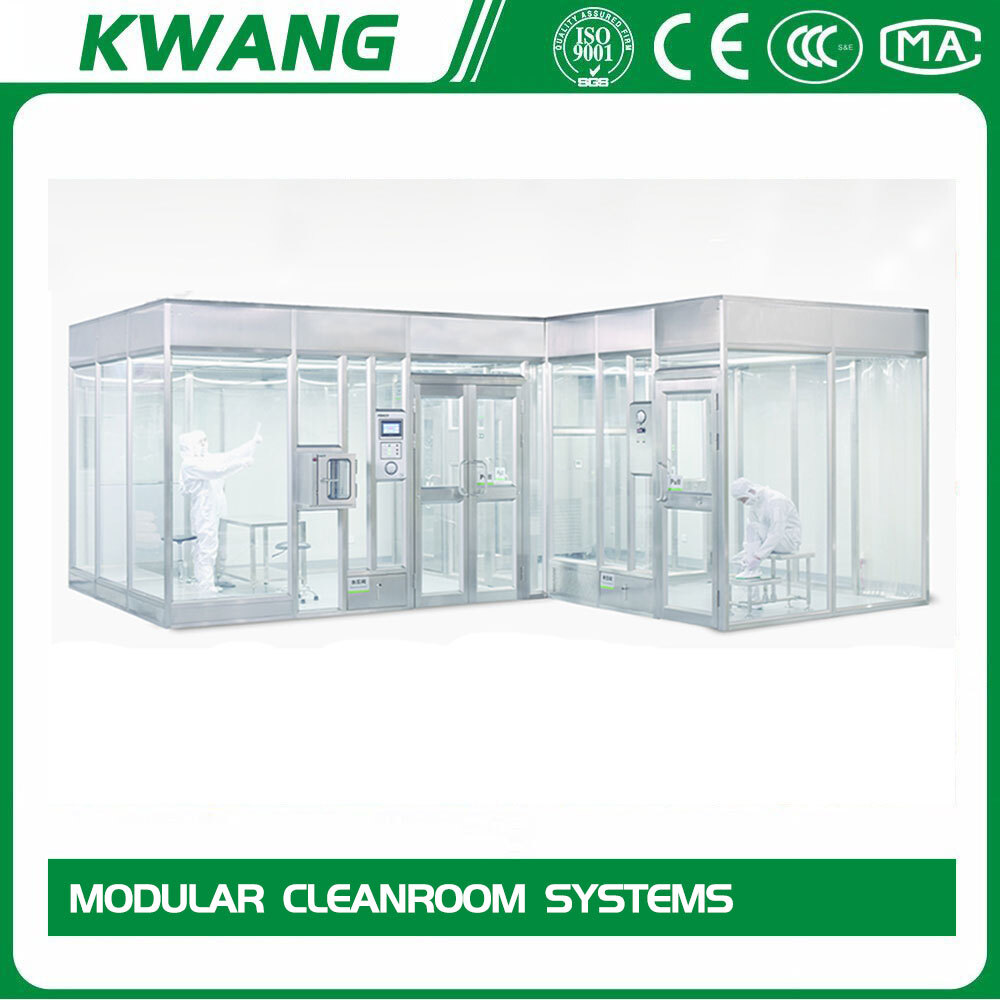
Our modular clean room concept is an independent self-standing building using prefabricated panels. One of our many unique advantages is our free-standing walls with a fully load-bearing ceiling.
Modular cleanrooms are most often used in manufacturing and research facilities, but, thanks to their versatility and ease of installation, they’re finding use in new industries every day. Any industry or application where small particles can adversely affect manufacturing, production, or packaging processes can benefit from the use of a modular clean room.
By definition, a cleanroom is a controlled environment with a low level of pollutants such as dust, airborne microbes, aerosol particles, and chemical vapors. To be exact, a clean room maintains a controlled level of contamination, which is specified by both particles per cubic foot and allowable particle size.
Modular cleanrooms are used in clean-critical processes in numerous markets, including:
Semiconductor manufacturing
Pharmaceutical processing
Biotech and medical device manufacturing
Military and aerospace
Optical component manufacturing
Automotive manufacturing
Hospital clinics
Food and beverage processing
Cosmetics manufacturing
and countless others
Many cleanrooms are permanent construction—that is, built into a building. But more and more cleanroom users seek a solution that provides more flexibility than a standard cleanroom.
Perhaps the greatest benefit of modular cleanrooms is that they can be modified or even relocated with minimal expense and downtime. Many prefabricated modular cleanrooms are almost 100% reusable.
In general, modular cleanrooms from are far less expensive than standard sheetrock construction, and can be installed in just a fraction of the time.
Many prefabricated cleanrooms are factory-cut, with prewired UL-classified raceways that provide a flush interior surface for electrical outlets and phone/data wiring. These raceways can also be used as service chases to house deionized water, compressed air, or nitrogen lines. Built-in raceways eliminate the mess of cutting and sanding drywall on site, and minimize construction time and facility disruption.
Many modular cleanrooms feature an insulated wall system that provides a thermal barrier and improves the efficiency and performance of the cleanroom’s mechanical system. This reduces energy costs and maintains temperature levels far better than non-insulated systems.
Depending on the classification level or function of a cleanroom, entry and exit through anterooms and/or gowning rooms may be required. Many modular cleanrooms can be built with accommodations for these rooms to reduce contamination from external environments. Airlocks, air showers, and pass-through boxes can be integrated so that personnel, products, and materials can be safely brought into and out of the cleanroom space without the risk of contaminant infiltration.
Contact Cleanrooms by Kwang for more information on the benefits of modular cleanrooms. Have questions? Call us today.
Modular cleanroom systems are highly configurable because they are constructed of hard or soft panels with a hard ceiling. Soft panel cleanrooms have walls made from clear PVC and one small opening for entering and exiting the area. Hardwall cleanroom systems consist of prefabricated panels that join to create a square or rectangular room. This style of prefab clean room is fully enclosed and can be fitted with doors, windows, and transfer hatches, just like a permanent cleanroom.
Some of the advantages modular cleanroom systems provide over permanent clean rooms include:
Versatility: A modular cleanrooms can be readily assembled, disassembled, and relocated, often in just a few days or less.
Easily reconfigurable: The layout of a modular cleanroom can be rearranged, expanded, retrofit, and/or upgraded as the user’s cleanroom needs change.
Cost-effective & time saving: Modular cleanrooms are designed and manufactured offsite for just a fraction of the cost of permanent construction, and installed onsite in a fraction of the time.
Reduced downtime: Modular cleanroom installation causes far less disruption to daily operations, allowing many users to keep some or all of their processes up and running throughout the set-up process.
Leasing: If you lease your space, the modular option allows you to uninstall the clean room you need and take it with you if your operation changes locations.
R.O.I.: Because it can be taken down, moved, and re-erected, a modular cleanroom is considered a piece of capital equipment, and can be treated as such for taxation purposes.
Cleanliness: A modular cleanroom is the better option for cleanroom requirements above ISO 6 classification. The materials used in these systems do not shed like drywall or metal studs, reducing the level of contamination.
A modular cleanroom is an easy way to achieve climate control and regulatory compliance. From semiconductors to medical devices, manufacturers and researchers in all markets can use modular cleanrooms to meet stringent cleanliness standards.
Designed for flexibility, hardwall modular cleanrooms are easy to assemble and relocate. Modular clean rooms are cost-effective and great option when you need a cleanroom quickly or want the option to expand in the future. We outfit all modular cleanroom systems with windows, doors, flush mount electrical outlets, and full insulation for temperature control
Softwall cleanrooms work well in an existing controlled environment where increased airflow or spot clean areas may be needed. Available with casters, softwall cleanroom can be easily moved around your facility for use in multiple areas. We fit our softwall modular cleanrooms with HEPA filters and air conditioning, available to ISO Level 5. Curtain dividers can be used in place of doors or to subdivide your cleanroom space, or to assist in directing airflow to more stringent areas.